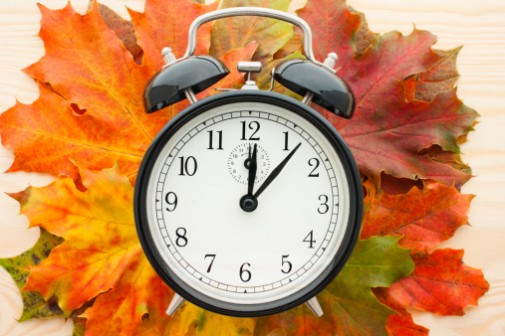Preparing for daylight savings time

Daylight savings time pops up on our calendars every year, requiring us to “fall back” an hour on the clock in the fall season and to “spring forward” an hour in the springtime. In the fall, we gain an extra hour of sleep, compared to losing an hour of sleep with the spring time change.
Dr. Satish Gowda, a pulmonologist and sleep specialist at Advocate Good Shepherd Hospital in Barrington, Ill., says that the spring time change of “losing” an hour can be more difficult to adjust to than when we “gain” an hour in the fall.
Dr. Gowda explains that changing the time in either direction shifts the body’s main time cue – the daylight – for setting and resetting our 24-hour natural cycle. In doing so, our internal clock becomes out of sync or mismatched with our sleep processes as well as social and environmental factors.
“In the spring, we not only have to get up an hour early, but we’re also fighting the extra 20 or 30 minutes of sleep our bodies naturally want every day,” Dr. Gowda says. “In the fall, the time change is more in line with our internal clock.”
While daylight savings time has strong effects on adults, the changes have an even greater effect on children. Dr. Gowda suggests the following tips to help with the adjustment for your children:
- A few days before daylight saving starts, get your child into bed a little earlier than normal. This encourages their body (and mind) to relax a little earlier than usual which will lead to falling asleep earlier, too. The adjustment could take a few nights.
- Avoid trying to tire your child out with busy activities before bed. Overtired children often actually take longer to fall asleep and may even resist sleep completely.
How can adults make the adjustment more tolerable?
- If you are currently getting seven to eight hours of sound sleep each night, then hitting the hay a little early the night before should help you to wake up feeling refreshed.
- It is important to expose yourself to the light during the waking hours as much as possible, and conversely, do not expose yourself to bright light when it is dark outside.
- Create a sleep-friendly environment to enhance your chances of falling asleep, staying asleep and sleeping soundly. Consider reducing or eliminating caffeine and alcohol and exercising several hours before bedtime. You can also create calming rituals before bed to gradually relax yourself like taking a hot bath, and wearing ear plugs and eye masks. It is also helpful to try going to bed and waking up at the same time every day.
“While research has yet to firmly conclude any adverse health harms as the result of daylight savings time, we can all conclude it does make our body feel a bit off those days following the time change,” Dr. Gowda says.
Set your clocks back one hour this weekend on Sunday at midnight.
Related Posts
Comments
About the Author
health enews staff is a group of experienced writers from our Advocate Health Care and Aurora Health Care sites, which also includes freelance or intern writers.

















